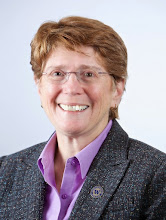In the October issue of the King County Bar Bulletin, Seattle lawyer Frederick P. Corbit presented the results of his study of local judges' reversal rates in the Washington Court of Appeals (see earlier post). Now a judge responds with an analysis of the limitations Corbit's study and of any such study. John P. Erlick, Judicial Reversal Rates: What Do They Tell Us?, B. Bull., Feb. 2007. (Note: after the March issue is posted, this article's URL will be this.)
Judge Erlick emphasizes the limits of a study that tries to measure the performance of trial judge by counting how many times their cases are reversed.
- Appeals vary by subject. For instance, many more criminal than civil cases are appealed, but a lower percentage of criminal appeals are successful. If a superior court judge has a criminal rotation during the period studied, he or she will probably have a lower than average reversal rate.
- Who's the judge? The appellate decision will list as the lower court judge the judge who entered the judgment. But the action that's reversed might be something done by the judge who presided at trial or a judge who ruled on a pretrial motion a year before trial.
- What's a reversal? If a case is affirmed on six issues but reversed and remanded on one, is that counted as a reversal?
- How do you define the rate of reversal? Only a very small portion of dispositions are appealed. If a judge handles a couple of hundred cases, including summary dispositions, cases that settle, and trials that are never appealed, it's a skewed picture to only look at the number of reversals as a percentage of the number of appeals.

No comments:
Post a Comment